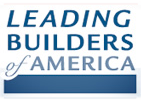U.S. home builders might not be singing “Happy Days are Here Again,” but they seem to be humming a few bars of “I Whistle a Happy Tune.”
According to the NAHB/Wells Fargo Housing Market Index, builder confidence is up again in May for a second consecutive month, its highest level since August 2007. The index gained three points, improving to 22.
Historically speaking, 22 is still low for the 20-plus-year index. Any number under 50 on the index indicates that more builders view sales conditions for single-family homes to be poor rather than good.
Still, NAHB executives viewed the gain as a positive especially since the survey was taken at the beginning of May after the expiration of the extended and expanded federal home buyer tax credit.
“This means builders are more comfortable that the market is truly beginning to recover, and that positive factors for building a new home–low interest rates, great selection, stabilizing prices, and a recovering job market–are taking the place of tax incentives to generate buyer demand,” said NAHB chief economist David Crowe in a news release announcing the index results.
The survey measures builder perceptions of the market in three areas. It asks whether their current sales and their sales expectations for the next six months are “good,” “fair,” or “poor,” and it asks builders to rate prospective buyer traffic as “high to very high,” “average,” or “low to very low.” The three component scores are then used to calculate a seasonally adjusted index.
Each of the three component indexes posted three-point gains in May. The component gauging current sales conditions climbed to 23, its highest level since July 2007. The component gauging sales expectations in the next six months rose to 28, its highest point since November 2009, and the component gauging buyer traffic improved to 16, its best showing since September 2009.
While the Housing Market Index posted gains in every region in May, there were significant regional differences in confidence levels. The Northeast, which is subject to greater month-to-month volatility because the sample size is small, rose 14 points to 35, its highest since June 2007. The Midwest posted a two-point gain to 17, the South registered a one-point gain to 22, and the West posted a seven-point gain to 20.

